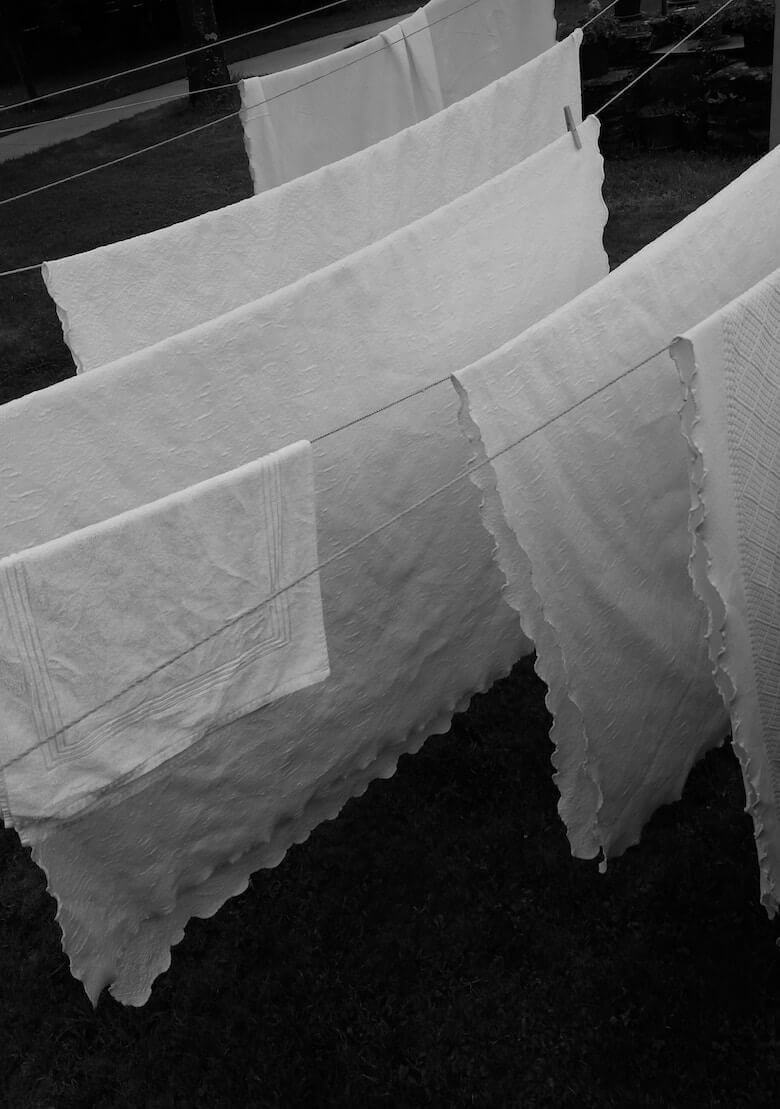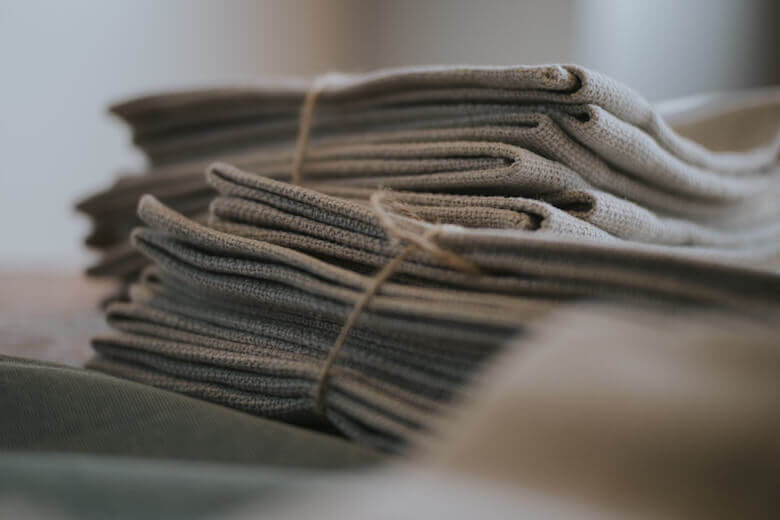Whilst all our linen homewares and clothes are machine washable and can be tumble dried, not all linens are so strong. If you have inherited or purchased any antique and vintage linens you might be wondering how best to clean and care for them. It's essential to be careful and cautious, but also to remember that many old linens were well made and are more robust than we might imagine. A good way to test the strength of your linen textiles is to hold them up to the light and look for areas that seem more transparent or have holes. If the threads are coming apart then the garment is probably on its way out.
Remember also that older linens were not as bright as more modern white textiles. Just because a fabric is off-white it doesn't mean it needs to be bleached or boil washed - that may well be its original colour. In fact, if you buy an antique linen textile that is very white there's a chance it will have been bleached, and therefore the fabric may be damaged.
Here's a simple guide to washing, drying and pressing your heritage linens.

Washing vintage linens
This post describes the historical (and frankly quite strange) ways people used to wash and clean their linens, though these methods may not be appropriate for an ageing piece of textile. It may not be possible to completely remove stains or yellowing, but here's how to wash your vintage linen. Firstly, soak the linen in distilled water for several hours. Then place it in a large sink or container full of hot water and a gentle detergent. Agitate but don't scrub or pummel. Leave to soak again, then rinse with distilled water. Repeat this process until the linen is clean, but bear in mind that very old stains may never come out entirely.
If the item has embroidery on it you should test the threads for colourfastness before washing. If the colour starts to run you may need to dry clean the garment.
Treating stains
With new linens it's vital to treat stains and spills as soon as possible, but this is obviously not possible with older items. Some people have had luck applying a mixture of lemon juice and salt to a stain and then leaving the garment to dry laid out on a lawn in the sunshine. Never use chlorinated bleach as this will irrevocably damage the fibres.
Ironing/ pressing antique linens
If you want to iron or press your antique linens, make sure the item is still damp. Press embroidery on the reverse side to prevent squashing the threads.
Storing old linens
Once you've cleaned and pressed your linens, store them flat in a dry place. Line old chests with towels before storing linens inside as the oils in the wood can cause rusting. Acid-free tissue paper is great for linens of significant historical or monetary value, but you can wrap less precious items in cotton pillowcases for a cheaper alternative. Whilst careful storage is essential, don't hide your beautiful antique linens away - use them, celebrate them, and pass them on to the next generation who can weave their own stories into each thread.
Investing in top quality, well made linen homewares means your linens will last longer. Not only is this a more sustainable way to live, it also means you can pass on your beautiful linens to other people. As well as taking special care of older linen textiles, it's also a good idea to look after your new linens properly. That way you can ensure they are in a good condition for years to come, and you can pass them on in the knowledge that they won't be stained or damaged. For tips on how to care for new linens go here and here. And if you have inherited some precious vintage linens yourself, follow these tips and you can keep them going for many years to come.
For more linen care tips you could visit Houserituals website.
2020-05-06
2020-05-12
Dear Pamela,
The only idea that comes to my mind is trying to contact linen museums. You could find a list here: https://www.linenme.com/news/flax-linen-museums/
All the best!
Inga

I am sitting on a mountain of antique linens I inherited from my 100-year-old great aunt. I would love to know what each item is and where it came from, as well as how to best care for them. I'm beginning to investigate and match things I find on the internet, but some things I'm just not seeing.
Irish linen, Belgian linen, Giant Madiera tablecloth and napkin sets, Organdy MARGHAB. Is there a chat or organization for collectors of antique linen that might help me identify the pieces? Thanks for any help you have to offer.